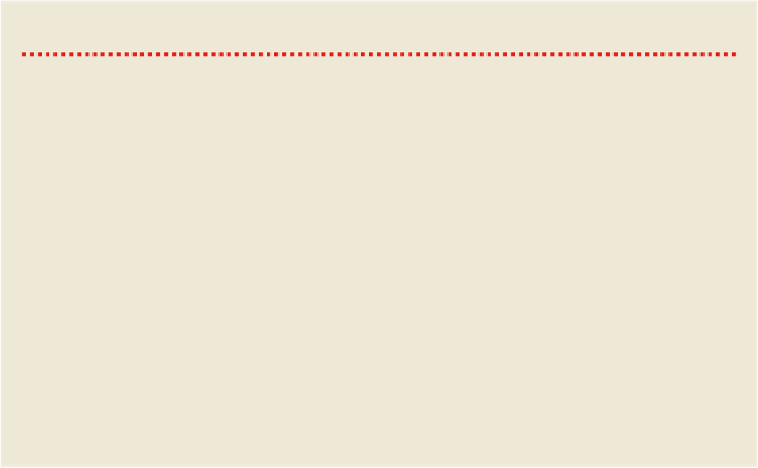Travel Reference
In-Depth Information
The reign of Suryavarman II and the construction of Angkor Wat signifies one of the
high-water marks of Khmer civilisation. However, there were signs that decline was lurk-
ing. It is thought that the hydraulic system of reservoirs and canals that supported the agri-
culture of Angkor had by this time been pushed beyond its limits, and was slowly starting
to silt up due to overpopulation and deforestation. The construction of Angkor Wat was a
major strain on resources, and, on top of this, Suryavarman II led a disastrous campaign
against the Dai Viet (Vietnamese) late in his reign, during the course of which he was
killed in battle.
TOP 10 KINGS OF ANGKOR
A mind-numbing array of kings ruled the Khmer empire from the 9th to the 14th centuries AD. All of
their names include the word '
varman',
which means 'armour' or 'protector'. Forget the small fry
and focus on the big fish in our Top 10:
Jayavarman II
(r 802-50) Founder of the Khmer empire in AD 802.
Indravarman I
(r 877-89) Builder of the first
baray
(reservoir), Preah Ko and Bakong.
Yasovarman I
(r 889-910) Moved the capital to Angkor and built Lolei and Phnom Bakheng.
Jayavarman IV
(r 924-42) Usurper king who moved the capital to Koh Ker.
Rajendravarman II
(r 944-68) Builder of Eastern Mebon, Pre Rup and Phimeanakas.
Jayavarman V
(r 968-1001) Oversaw construction of Ta Keo and Banteay Srei.
Suryavarman I
(r 1002-49) Expanded the empire into much of Laos and Thailand.
Udayadityavarman II
(r 1049-65) Builder of the pyramidal Baphuon and the Western Mebon.
Suryavarman II
(r 1112-52) Legendary builder of Angkor Wat and Beng Mealea.
Jayavarman VII
(r 1181-1219) The king of the god-kings, building Angkor Thom, Preah Khan and
Ta Prohm.
Enter Jayavarman VII
In 1177 the Chams of southern Vietnam, then the Kingdom of Champa and long annexed
by the Khmer empire, rose up and sacked Angkor. This attack caught the Khmers com-
pletely by surprise, as it came via sea, river and lake rather than the traditional land routes.
The Chams burnt the wooden city and plundered its wealth. Four years later Jayavarman
VII (r 1181-1219) struck back, emphatically driving the Chams out of Cambodia and re-
claiming Angkor.

